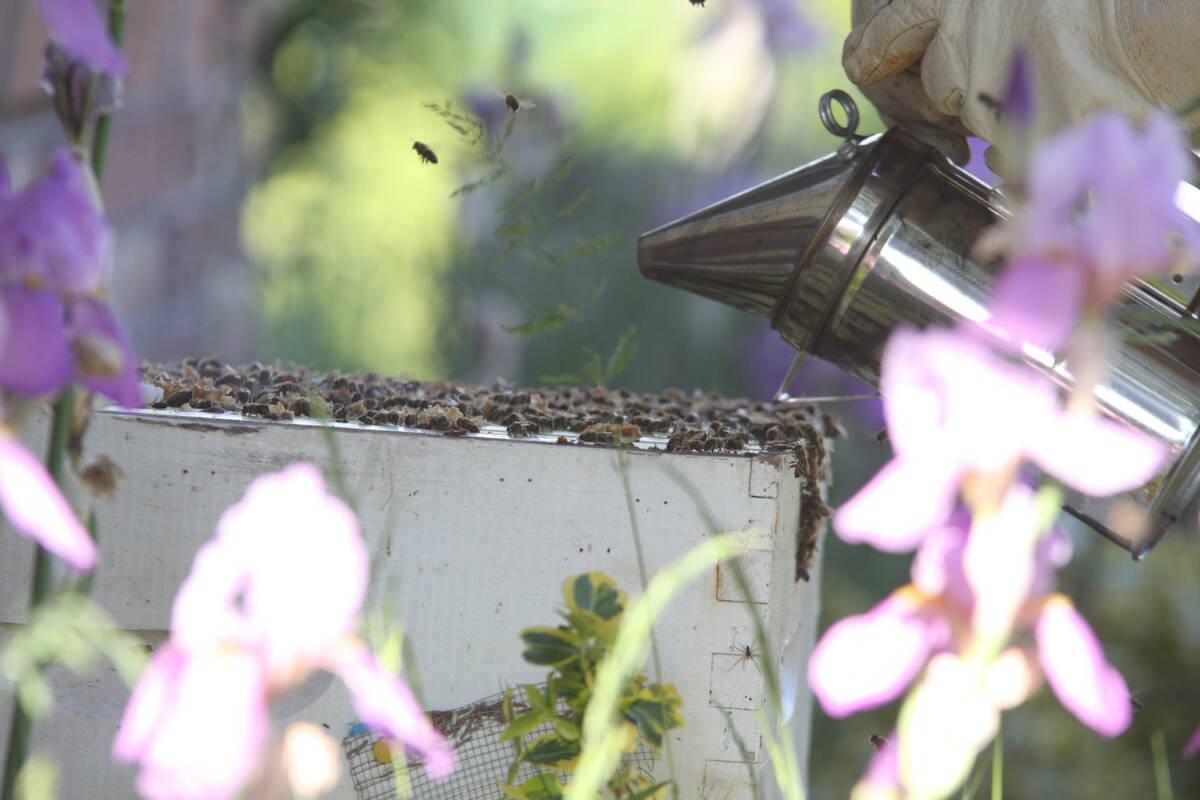CWB changes prompt reform call | Scientists argue CWB played little role in registration process
WINNIPEG — Now that the CWB’s monopoly is set to disappear Aug. 1, some producers want to transform another grain industry institution they see as cumbersome — the variety registration system.
However, Brian Rossnagel, a prominent barley and oat breeder in Western Canada, says farmers should realize the CWB and Canada’s variety registration system are not joined at the hip.
“This (variety registration) has nothing to do with the single desk,” said Rossnagel, who took part in a panel discussion on variety registration at the Canada Grains Council’s annual meeting in Winnipeg April 17.
Read Also

Manitoba beekeepers battle for survival
Honeybee colony losses have hit 43 per cent, making 2025 the latest in a string of poor bee survival years for Manitoba’s honey producers
The board and wheat variety registration haven’t been strongly connected for 20 years, he added.
“With regard to wheat varieties in the past, even as late as the 1980s, they (CWB) were a very dominant player in the system,” he said, referring to the committees that decide the fate of prospective cultivars.
“But by 1995, they (the CWB) were the same number and they represented a small piece of the group…. So their influence had dramatically changed.”
Rossnagel, who is professor emeritus at the University of Saskatchewan’s Crop Development Centre, also pointed to other crops.
“There’s variety registration for oats, canola and special crops … which the Canadian Wheat Board has never, I shouldn’t say never in the case of oats, but everything else has never been part of (the CWB).”
However, Cherilyn Nagel, past-president of the Western Canadian Wheat Growers Association, said the end of the single desk presents an opportunity to reform the variety registration system.
Nagel, who also participated in the panel discussion, said she doesn’t have patience for a system that can take more than 12 years to develop and register a new crop variety.
“I do think, the variety registration system, it’s a good time to make this change now that we have a deregulated wheat market,” said Nagel, who grows wheat and other crops on 10,000 acres near Mossbank, Sask.
“The Canadian Wheat Board had a lot to do with the registration process in the past. Good or bad, they were involved.”
Nagel said it’s obvious the registration system isn’t working for wheat because yields in Western Canada are increasing at a paltry 0.7 percent annually.
She said producers need access to a wide array of varieties so that they can grow wheat suited for local soil conditions or produce wheat for a particular segment of the marketplace.
“I want to have the opportunity to grow (wheat) for other end-use products,” she said.
“I want the opportunity to grow a medium quality wheat… especially a higher yielding variety.”
Dave Hatcher, program manager for the Canadian Grain Commission’s research laboratory, defended the variety registration system, noting it delivers higher yielding, mid-grade varieties.
For instance, several varieties of Canada Prairie Spring, a medium protein, high yielding class, have been registered in recent years.
“Over the last five years we have developed and had registered … some absolutely fantastic CPS reds that have yield advantages over CWRS of 20 percent,” he said.
Hatcher said the registration system has become a highly democratic institution over the last two decades.
Members of the variety recommending committees represent a broad swath of Canada’s grain industry — plant breeders, provincial agronomists, university scientists, seed growers, grain handlers and producer groups — who evaluate the agronomic, disease and quality characteristics of candidate cultivars.
“It is not a group of scientists … as it was many years back,” he said. “It has become … very, very open.”
Rossnagel said it was different when he started in plant breeding.
“In 1975, the first year I attended the (committee) meetings, I was told to go to the back of the room and sit down and shut up,” he said. “It was very autocratic. It is no longer autocratic, it is democratic.”
Terry James, vice-president of export marketing for Richardson International, said it’s too early to modify variety registration, given the recent radical changes to Canada’s grain system.
- first, it must have a recommendation from a committee recognized by the Canadian Food Inspection Agency
- seventeen recommending committees are listed on the CFIA website, such as the Prairie Recommending Committee for Oat and Barley and the Ontario Pulse Crop Committee
- to sit on a committee, which may have one to two dozen members, a person must have expertise in breeding, plant pathology, producing, processing, marketing or specific knowledge of a particular crop
- a committee meets once a year, usually in February, to evaluate cultivars that are candidates for evaluation
- to become a candidate for evaluation, the cultivar must have been grown in a sufficient number of trials to provide data on yield, disease resistance, seed quality and other characteristics
- based on data from the trials, the cultivar must meet or exceed the performance of a check cultivar; otherwise, the committee won’t evaluate its suitability for registration
- committees are broken up into three evaluation teams: disease team, agronomy team and quality team
- the teams discuss the merits of each cultivar and then vote to support it or not
- if the teams are evaluating a particular wheat cultivar, the sub-groups would submit results to the entire committee; in the case of wheat, it would be the Prairie Recommending Committee for Wheat, Rye and Triticale
- the entire committee would then hold a secret ballot, where members support, object or abstain based on the merits of the variety
- if successful, the variety is recommended to the CFIA for registration
- a recommendation for reg-istration does not represent a recommendation to farmers















